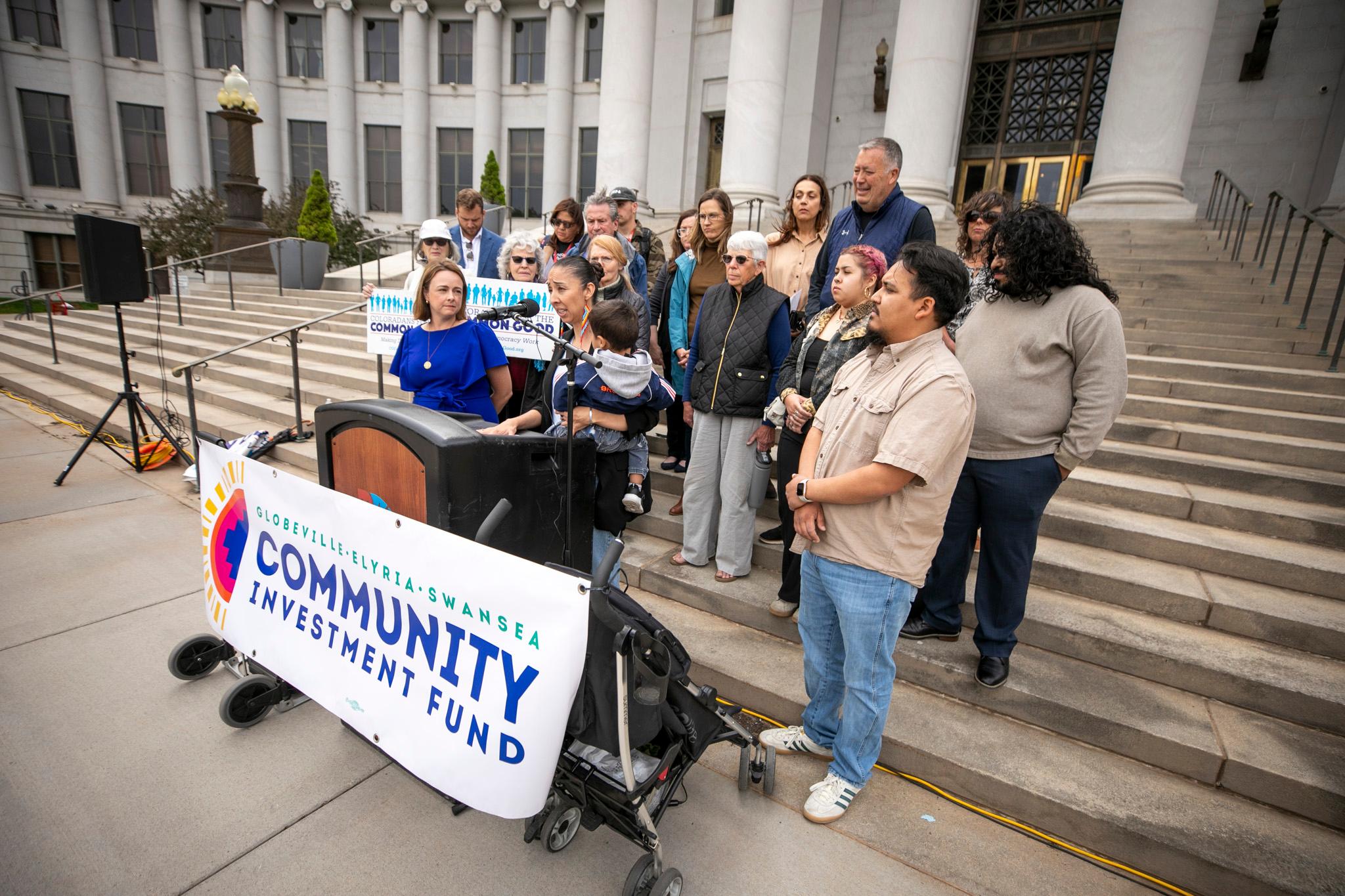Next to the Denny's in Baker sits a half-acre empty patch of concrete that's zoned for big things: up to 12 stories of residential units that could include hundreds of permanent homes.
Under Mayor Mike Johnston though, the parking lot that sits in the highly trafficked armpit of W. Alameda Avenue and Interstate 25, will, for now, likely be used for the small and the temporary: one of his micro-communities -- part of a larger plan to house 1,000 people currently living on the streets in a mix of pallet homes, tiny homes, motel rooms and rented apartments by the end of the year.
In many cases, these new homes will be short-term solutions as people wait to move into income-restricted housing that is scarce in Denver. Some people may make the transition. Others may move back to the streets.
Here's what we know about the proposed micro-community.
SEH, a Minnesota-based, employee-owned engineering, architecture and planning firm that specializes in working with governments to help solve complicated problems, has submitted concept plans to the city.
The company has not responded to requests for comment for this story.
The concept plans are a first-step proposal, works in progress to send to the city's Department of Community Planning and Development to determine what's possible on the land. The documents are subject to change.
The submitted plans offer two possibilities for the community.
One includes 40 pallet shelters with a community building.
The other includes 21 temporary-managed community units, plus three accessible units and a meeting home for people to gather, along with two areas for dogs to relieve themselves.
Both options would be temporary, fenced in from public view and given top priority by Community Planning and Development. The agency is allowing projects, submitted under the mayor's homeless state of emergency plan, to jump the line ahead of market-rate projects in the permitting process
A building up to 12 stories on nearly half an acre of land could provide a lot more needed housing than a few dozen tiny homes.
For comparison, Flora, a 12-story building on a half-acre lot in the RiNo Art District, boasts more than double the number of units the micro-community could hold: in total, 92 apartments, along with 15,000 square feet of commercial space.
The Colorado Department of Transportation lot is adjacent to other empty parcels owned by other private property owners. If all the lots were purchased by a single developer, a 12-story building on the site could conceivably include hundreds of units.
Unless such a building were publicly financed as deeply affordable housing, it wouldn't make a huge immediate impact on Denver's homelessness emergency, though even more market-rate supply would likely help stabilize long-term rents, which have been rising in recent years.
And building in Denver isn't fast.
Negotiating the sale of the land, the design and permitting of the building, and construction could take years, and as the Johnston administration sees it, people living in public spaces need housing now -- even if it's tiny and temporary.
Cathy Alderman, a spokesperson for the Colorado Coalition for the Homeless, says the city would be smart to find nonprofit developers who could create a plan for the state-owned plot of land in the next 18 months, while it's being used as a micro-community.
"They could use it in the interim, but with the goal of converting it into affordable housing for people exiting the cycle of homelessness, maybe even the very people who were living in the micro-community there," Alderman said.











